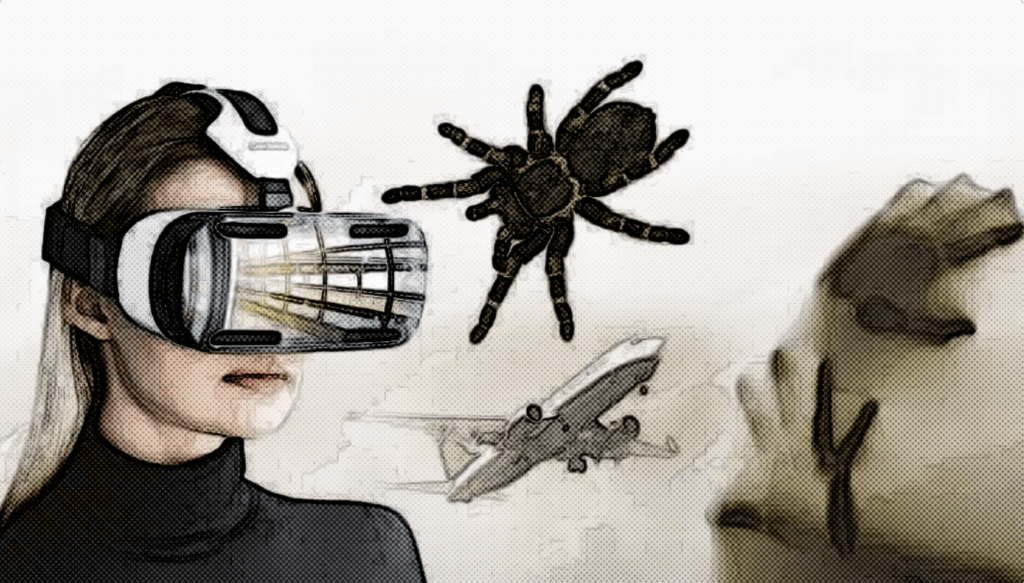Exposure therapy is one of the most effective treatments for anxiety-related conditions, including obsessive-compulsive disorder (OCD), panic disorder, social anxiety disorder, specific phobias, and post-traumatic stress disorder (PTSD). By helping individuals gradually face their feared situations, exposure therapy reduces avoidance and anxiety while improving overall quality of life.

At CBT Baltimore, we specialize in evidence-based therapies like exposure and response prevention (ERP), in vivo exposure, prolonged exposure, and imaginal exposure, guided by experienced clinicians in a safe environment.
What Is Exposure Therapy?
Exposure therapy is a structured form of psychotherapy rooted in cognitive behavioral therapy (CBT). It works by helping people confront the thoughts, objects, situations, or physical sensations they fear, rather than avoiding them. This process helps desensitize the brain’s fear response and reduces anxiety over time.
Whether delivered in person, through virtual reality, or using guided visualization, exposure therapy enables clients to develop new, healthier associations with their triggers.
How Does Exposure Therapy Work?
Exposure therapy works by gradually and systematically introducing a person to a feared object, situation, or memory, either in real life (in vivo), through imagination (imaginal exposure), or by focusing on interoceptive exposure—the physical sensations associated with fear, such as a racing heart rate or shortness of breath.
This repeated, controlled exposure reduces anxiety over time through a process called habituation.
Different Types of Exposure Therapy
There are several types of exposure therapy, each tailored to specific mental health conditions or phobias:
1. In Vivo Exposure Therapy
This involves facing real-life triggers directly. For example, someone with a fear of flying might gradually progress from looking at airplane photos to boarding a plane.
2. Imaginal Exposure
Used especially for post-traumatic stress disorder, imaginal exposure involves vividly recounting and processing traumatic memories in a controlled setting.
3. Interoceptive Exposure
This targets panic attacks and panic disorder by recreating bodily sensations like dizziness or shortness of breath. Clients learn to tolerate these sensations without reacting in fear.
4. Virtual Reality Exposure Therapy (VRET)
Using virtual reality technology, this method simulates anxiety-provoking scenarios in a safe, controlled environment. It’s particularly useful when real-life exposure is impractical or too distressing.
5. Exposure and Response Prevention (ERP)
Specifically designed for OCD, ERP involves facing obsessive thoughts while resisting the urge to perform compulsions. ERP is considered the gold standard treatment for OCD.
6. Prolonged Exposure Therapy
Often used in PTSD treatment, this involves revisiting and processing traumatic memories through extended, repeated recounting, typically under the guidance of a trained clinician.
Conditions Treated with Exposure Therapy
Exposure therapy is a proven, effective treatment for a wide range of mental health issues:
- Generalized Anxiety Disorder
- Obsessive-Compulsive Disorder (OCD)
- Panic Disorder
- Specific Phobias
- Posttraumatic Stress Disorder
- Social Anxiety Disorder
- Agoraphobia
It may also be used alongside systematic desensitization to help individuals with intense feared stimuli progress gradually at a comfortable pace.
What to Expect During Exposure Therapy
Exposure therapy is always guided by a trained clinician or psychotherapist, often within the broader framework of CBT. Each session is structured to build tolerance step-by-step, and clients are never forced into situations before they are ready.
Graded Exposure Approach
The process often begins with graded exposure, starting with mildly distressing scenarios and progressing toward more intense triggers. Over time, clients experience fewer fear responses and greater confidence in their ability to cope.
Sessions may be short-term or ongoing, depending on the severity of symptoms and goals.
The Science Behind Exposure Therapy
Exposure therapy is backed by decades of research in clinical psychology, with key contributors like Dr. Edna Foa and Dr. Michelle Craske leading its development for PTSD and anxiety disorders. The therapy is also recognized by organizations like the DOI and mental health institutes for its strong evidence base.
How CBT Baltimore Approaches Exposure Therapy
At CBT Baltimore, our clinicians tailor exposure therapy to each individual’s needs, background, and diagnosis. Whether you’re working through a traumatic event, facing obsessive-compulsive disorder, or managing daily anxiety, we’ll create a treatment plan that builds confidence and reduces fear in sustainable ways.
We offer in-person sessions and virtual therapy options, including virtual reality exposure therapy when appropriate. We ensure all exposures happen in a safe environment and at a pace that feels supportive and effective.
Ready to Face Fear With Confidence?
If you’ve been avoiding situations, sensations, or memories that trigger overwhelming anxiety, exposure therapy may be the breakthrough you need. Our expert clinicians at CBT Baltimore are ready to help you take that first courageous step.
Schedule a session today and start your exposure therapy journey with a trusted team at your side.
